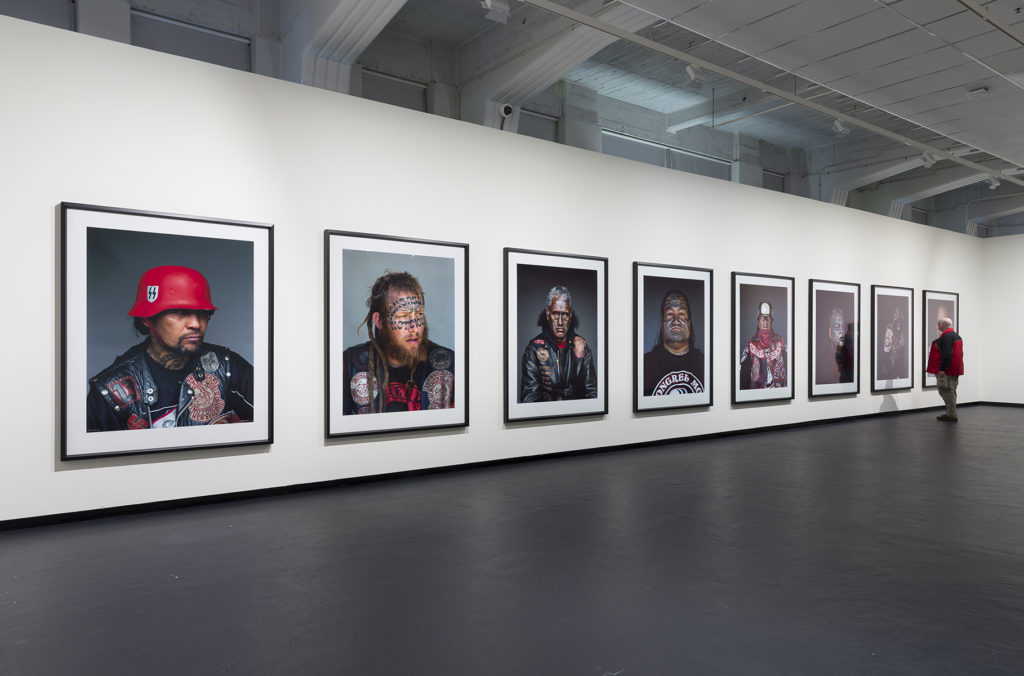CURATORS Robert Leonard, Aaron Lister PUBLICATION texts Aaron Lister, Ranganui Walker
Gangs are a polarising subject. In 2007, Jono Rotman began photographing members of New Zealand’s most notorious street gang, the Mongrel Mob. Over the years, he photographed some 200 men. Applying traditional studio portraiture conventions to these unlikely subjects, Rotman challenges our expectations of gangs and portraiture alike.
In 2013, before the work had been published or exhibited, Rotman received the prestigious Marti Friedlander Photographic Award for it. Making the Award, Friedlander said, ‘The photos of these men moved me to tears. It seems almost as if Rotman has understood something and revealed the person behind the badge without prejudice.’
When the portraits were first exhibited at Auckland’s Gow Langsford Gallery in 2014, they generated controversy. The media focused on the fact that one subject was standing trial for murder. They accused Rotman of glorifying the Mob life. He replied: ‘Is it glorification because they are good photographs? Should it be that these guys should only be shown in bad photographs or in police mugshots?’
Rotman says he neither glamorises nor caricatures his subjects. ‘I hope that viewers are forced to consider each man in person and consider deeply the forces that made him.’
Our show expands on the original Gow Langsford show. In addition to the eight portraits, it includes two Rotman photographs that reproduce Mob members’ own photographs—mostly snapshots. In Denimz’s Collage 3 (2014), a huge collection of images has been arranged for Rotman by Denimz Rogue, the subject of one of Rotman’s portraits. The collection includes scenes of prison life and gravestones.
Our show also features more portraits, including Sean Wellington and Sons (2009)—Rotman’s sweetest and heaviest image. In it, the main subject turns his back to us—we see his patch, but not his face. But, he carries his two sons, who face us. They wear tiny Mob shirts. People see gangs as abhorrent but see children as innocent, and it’s hard to reconcile these assumptions looking at this picture. We realise—if we didn’t know it before—that the Mob is a community generations deep, and people are born into it. While Rotman’s other portraits are mostly about what has happened (he famously refers to his sitters as ‘artefacts’) Sean is about the future. It prompts us to imagine the lives these boys will live.













































